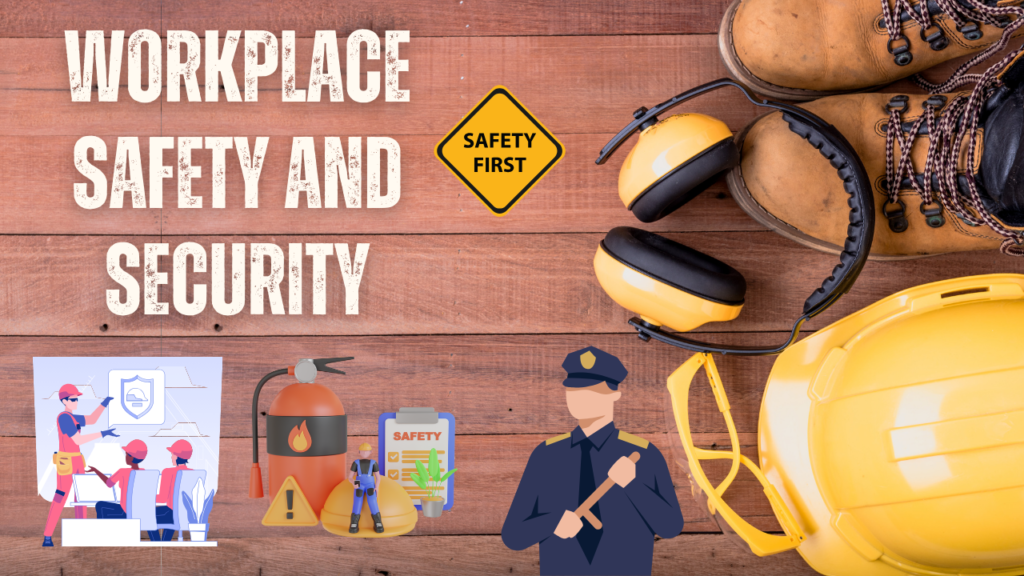Key Takeaways
- Building a workplace safety framework is critical to employee welfare and productivity.
- Employee safety training should evolve with technological and industrial changes.
- Workman’s compensation insurance protects the workforce and offers financial security against occupational risks.
- Technology enhances safety protocols, reducing the likelihood and severity of workplace incidents.
- Insurance is a prudent risk management strategy that supports businesses in adversity.
The Fundamental Role of Workplace Safety
Workplace safety forms the bedrock of employee well-being and is a non-negotiable aspect of running a business. An effective safety strategy eliminates potential hazards, ensuring that employees operate in a secure environment. Creating a comprehensive workplace safety plan involves:
- Understanding the specific risks of different job functions.
- Tailoring policies to mitigate these risks.
- Continuously updating practices to keep pace with evolving industrial standards.
Moreover, an organization’s commitment to safety is seen through how it trains its employees, communicates the importance of adhering to safety measures, and invests in resources such as workmans’ compensation insurance for small businesses, which provides a buffer against the financial strain of workplace injuries. A compelling safety culture can also serve as a competitive edge, attracting top talent who prioritize their health and safety at work.
Proactivity in Injury Prevention
Preventive action is the cornerstone of any safety initiative. Instilling a mindset that aims to foresee and preempt workplace incidents is more beneficial than grappling with the consequences of neglect. Identifying risks, such as slip-and-fall hazards or ergonomic issues, before they manifest into more severe problems can save companies from hefty costs, including medical expenses, compensations, and loss of reputation. A vigilant approach involves:
- Regular inspection of equipment.
- Scrutiny of the work environment.
- Prompt responses to safety warnings.
This preventive mindset should be an ongoing effort—an ever-present goal that shapes daily functions and informs strategic decisions. It underscores the understanding that a safe workplace contributes to employee satisfaction, operational excellence, and the organization’s bottom line.
Constructing a Dynamic Safety Program
A dynamic safety program is responsive to the needs of a changing work environment and is ever-evolving to cope with fresh challenges. It demands that safety protocols be revisited routinely and revised to reflect new insights, emerging trends, or industrial innovations. Perhaps more importantly, it requires an open communication channel with employees whose daily experiences can provide valuable input for enhancing the safety framework. Such a program entails an organizational willingness to view workplace safety as a living, breathing entity that requires nurturing through active participation, targeted training, and relentless commitment to process improvement.
Empowering Through Continuous Safety Education
Continuous education forms the backbone of an empowered workforce, allowing workers to navigate their work environment safely and efficiently. Disseminating safety knowledge shouldn’t be a one-time event but an ongoing effort incorporating lessons learned from past incidents. It should also adjust to include new regulations, technological advancements, and the introduction of new machinery or chemicals.
Training programs should be diverse in their delivery methods, including hands-on simulations, digital learning platforms, and seminar-style sessions, catering to varied learning preferences and ensuring the information is retained and can be practically applied. Regular drills and safety protocols should be ingrained in the company’s culture, ensuring emergency preparedness.
Cultivating a Safety-First Organizational Culture
A workplace that cultivates a safety-first culture is one where safety is more than mere compliance—it is a core value. Such a culture is about establishing shared values where everyone, from the CEO to temporary staff, is committed to maintaining a safe work environment. Meetings start with safety moments, and stories of safety successes are celebrated company-wide. This improves morale and fosters a heightened sense of community and responsibility.
The tangible benefits of a safety-focused culture are substantial, from reduced workplace injuries to lowered insurance premiums. It creates an environment where employees feel respected and valued, resulting in higher job satisfaction, retention rates, and a more substantial brand reputation.
The Undeniable Value of Workers’ Compensation Insurance
Despite the most robust safety policies, accidents can still occur, and that’s where workers’ compensation insurance steps in. It’s a regulatory requirement and a vital component of a comprehensive risk management strategy. Still, finding the right policy— one that aligns with both the needs of employees and the fiscal realities of the business—can be a daunting task. The right partner, offering worker’s compensation insurance for small businesses, can be invaluable in navigating this landscape, ensuring that the company can continue to operate without interruption should an accident occur.
The scope of workers’ compensation extends beyond financial assistance—it also encompasses rehabilitative support and retraining if necessary. It recognizes employees’ intrinsic worth and well-being, critical to maintaining a healthy work atmosphere and a resilient business operation.
Enhancing Practices Through Safety Evaluations
A workplace mindful of its safety practices is one that never stops questioning the efficacy of workplace safety procedures. Regular safety evaluations and inspections play a vital role in this. These can take many forms, from third-party audits to internal checks, and are fundamental in validating the effectiveness of safety measures. Identifying lapses and swiftly taking corrective action is crucial to maintaining the integrity of a safety program. Feedback gathered from these evaluations leads to a deepened understanding of workplace dynamics. When taken seriously, they can result in significant safety improvements. They are evidence of a business’s commitment to meet and exceed the minimum safety requirements wherever possible.
Leveraging Technology for Safety Advancements
The integration of technology in workplace safety strategies has the potential to be transformative. It can offer real-time monitoring of conditions, automate workplace safety reporting, and even predict potential incidents before they happen. Robotic process automation can relieve humans from dangerous tasks, while intelligent wearables can track vital signs and alert workers to unsafe exposure to hazardous materials. Despite the cost of integrating such technologies, the return on investment can be measured in lives and dollars saved and increased productivity. Businesses that embrace these technological tools enhance their safety procedures and demonstrate their forward-thinking approach to worker well-being and business operations.
The Prudence of Risk Management with Insurance
Comprehensive insurance coverage plays a significant part in the more extraordinary tapestry of workplace safety. It’s not just about compliance; it’s about exhibiting foresight and prudence, about preparing for eventualities that could derail a business’s financial stability. With the right insurance solutions, a company can stand resilient in the face of adversity, whether it be liability claims, property damages, or accidents that affect the workforce. Proper insurance provides a backdrop against which a business can confidently operate, knowing it won’t threaten its survival when challenges arise. It’s about creating a framework that accounts for the unpredictability of the future, leaving the business free to focus on growth and innovation.
Wrapping Up: Safety as an Organizational Pillar
Ultimately, workplace safety is an essential pillar of any thriving business. A well-executed safety strategy has far-reaching implications, from the workforce’s physical well-being to the company’s financial health. Investing in safety training, equipment, processes, and insurance like workman’s compensation insurance for small businesses speaks volumes about a company’s ethos and long-term viability. As businesses continuously aspire to higher safety standards, the journey towards an accident-free workplace becomes not just a possibility but an achievable reality. It is a path that commands dedication and foresight, with rewards measurable in reduced injuries and a more substantial company reputation, enhanced employee morale, and overall business success.












